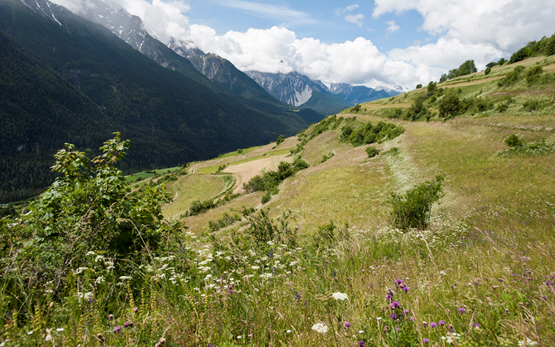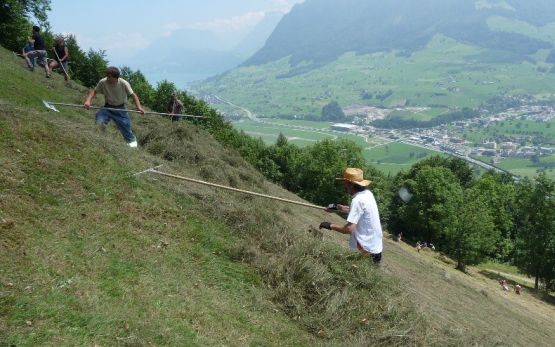The rake is increasingly being replaced by the hay blower for the hay harvest on mountain pastures. A long-term trial conducted by Agroscope researchers provided no evidence of any significant effects on vegetation of this management trend.
The use of hay blowers has led to discussions regarding the implementation of the measure in practice, which has made clarifications regarding possible implications for biodiversity necessary. Dry meadows and other species-rich mountain grasslands are endangered habitats, often with a high biodiversity whose preservation is vital. Here, the focus is on the management practices used, as the traditional hay harvest using rakes is being replaced by faster and more economical methods. In recent years, the use of hay blowers has become increasingly popular. But does this trend affect the vegetation? To answer this question, Agroscope launched a project on behalf of Pro Natura in 2010. The aim was to investigate the possible effects of hay blowers on the plant diversity of species-rich mountain meadows such as dry meadows.
No significant differences
A dry meadow in Stans (Canton of Nidwalden) was divided into 10 comparable plots on which hay was either harvested with a hand rake or a hay blower. In 2010 to 2015 and in 2023 Agroscope specialists surveyed the vegetation on the neighbouring mown and raked plots. After 13 years, there was no evidence of any significant differences in terms of species diversity, species composition, target and indicator species of the Agriculture -Related Environmental Objectives (AEOs) or moss cover between the two management practices. Based on these studies, the continued use of hay blowers to harvest semi-arid grasslands and other species-rich mountain meadows need not be discouraged. What is important here is that the plots be grazed or mown, and that the grass clippings be removed to prevent shrub encroachment.







